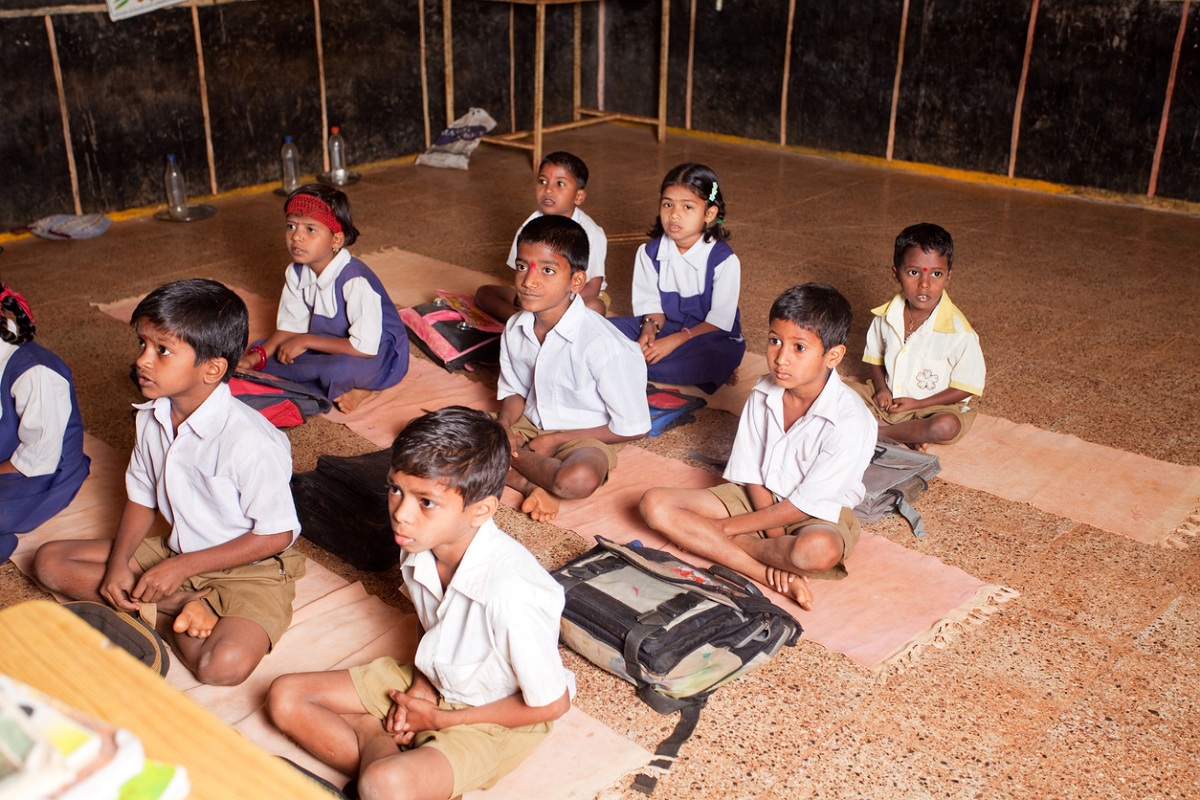Digital education now mandatory for Uttarakhand teachers, principals
The Uttarakhand government has made digital education compulsory for its school teachers and principals.
Around 32 crore children have lost an entire school year due to the pandemic and one third of children may not return to schools when they reopen as shortterm disruption in education risks permanent drop-out.

(Representational Image: iStock)
The overarching message coming out of the recently presented Union budget was to be healthy and become self-reliant, or Atmanirbhar. While the significance of health can never be denied, in the socio-economic milieu that we live in today, ‘education’ is deemed more important towards becoming selfreliant. It is unfortunate, however, that the budget failed to appreciate the potency of the health-education combination as an effective weapon to become self-reliant and overcome economic distress. The neglect of the crucial backward- forward development linkages of education in this year’s union budget is reflective of a myopic vision of growth and development, fraughtwith serious long-term implication.
The education sector in India, currently reeling under the Covid-19 induced crises, urgently needed budgetary support to deal effectively with the challenges of learning inequalities due to pervasive socio-economic and digital disparities. Around 32 crore children have lost an entire school year due to the pandemic and one third of children may not return to schools when they reopen as shortterm disruption in education risks permanent drop-out.
Advertisement
Schools are preparing to re-open and budgetary support at this juncture would have been the much needed and timely shot in the arm. On the contrary, the budgetary allocations have been slashed for education sector in general and school education in particular. The education sector received a budget of Rs. 93,224 crore for 2021-22 which is 6.13 per cent lower than budget estimates for 2020- 21. Compared to last year, the allocation to education sector has declined by Rs. 6,088 crore and this decrease is largely on account of the 8.3 per cent reduction in school education budget. Yet, the finance minister in her budget speech hailed ‘education for all’ as an important objective towards achieving the ultimate goal of ‘Atmanirbhar Bharat’.
Advertisement
Only last year the government unveiled the ambitious National Education Policy (NEP 2020) with much fanfare but the roadmap of its implementation and the required financial support is conspicuously missing in the budget. Where will the money come from for the implementation of various initiatives outlined in the NEP that include National Professional standards for teachers, innovative learning pedagogy, National Digital Educational Architecture (NDEAR), standardisation of Indian sign language and reforms in the CBSE board exams structure?
The insightful analysis of the union budget by Centre for Budget and Governance Accountability (CBGA), a new Delhi based organisation, highlights some extremely disturbing trends, raising serious concerns over the fate of funding for education in India. It may be noted that out of Rs. 54,874 crore budgeted for school education, Rs. 44,000 crore is coming from education cess and Rs. 4,800 crore from the National Investment Fund. This implies that over time, the gross budgetary support for education is declining and the fate of allocation for the sector depends on cess collection and disinvestment proceeds.
A closer look at the union budget at the disaggregated reveals that allocations have reduced for even some flagship schemes of the government that have direct and huge bearing on the literacy levels and nutritional status of our children. Samagra Shiksha Abhiyan (SMSA), the key centrally sponsored scheme for school education, has seen a a decline of Rs. 7,701 crore and the Mid-Day Meal (MDM) scheme, the largest of its kind in the world, has been allocated Rs. 1400 crore less than the revised estimate of the previous year. It is difficult to justify these cuts when schools are reopening after a tumultuous year. It was imperative on the part of the government to invest in components like basic infrastructure, including WASH facilities in schools and teacher training for children’s mental or emotional wellbeing post the pandemic.
The entire edifice of teaching learning in the country during the pandemic became dependent on technology highlighting the need for integration of technology in the education system. Yet allocations for schemes such as ‘Operation Digital Board’ decreased substantially from Rs. 25 crore in 2020-21 (BE), to Rs. 1 crore in 2021-22 (BE). However, the Digital India e-learning umbrella programme under the Department of Higher Education has been allocated an additional Rs. 200 crore.
The significant role of education in development of human capital and growth of an economy is well established. Recognizing the high returns on investment in education, a progressive family even with meagre resources, spends a considerable percentage of family income on education. In support of this growing aspiration for education, the government too should have viewed it as an investment and increased the budgetary allocation on education.
According to the World Bank’s Human Capital Index which provides a measure of a country’s productivity per worker against its potential; a child born in India with better health and education, can become twice as productive leading to doubling of India’s GDP per worker in future. The upshot is that the most opportune time for adequate investment in education is now.
Various high-level committees in the past and even the latest NEP 2020 had recommended that the combined public spending on education sector by the Union and the States should be equal to 6 per cent of Gross Domestic Product (GDP). It is disturbing, however, to note that the share of education in the total union budget is continuously decreasing. This budget allocated only 0.42 per cent of GDP.
Amidst high expectations, such step motherly treatment to education in terms of budgetary allocations has left the education sector high and dry making us all wonder in dismay if education is a priority at all? The writer teaches Economics at The Lawrence School, Sanawar. The views expressed are personal.
Advertisement